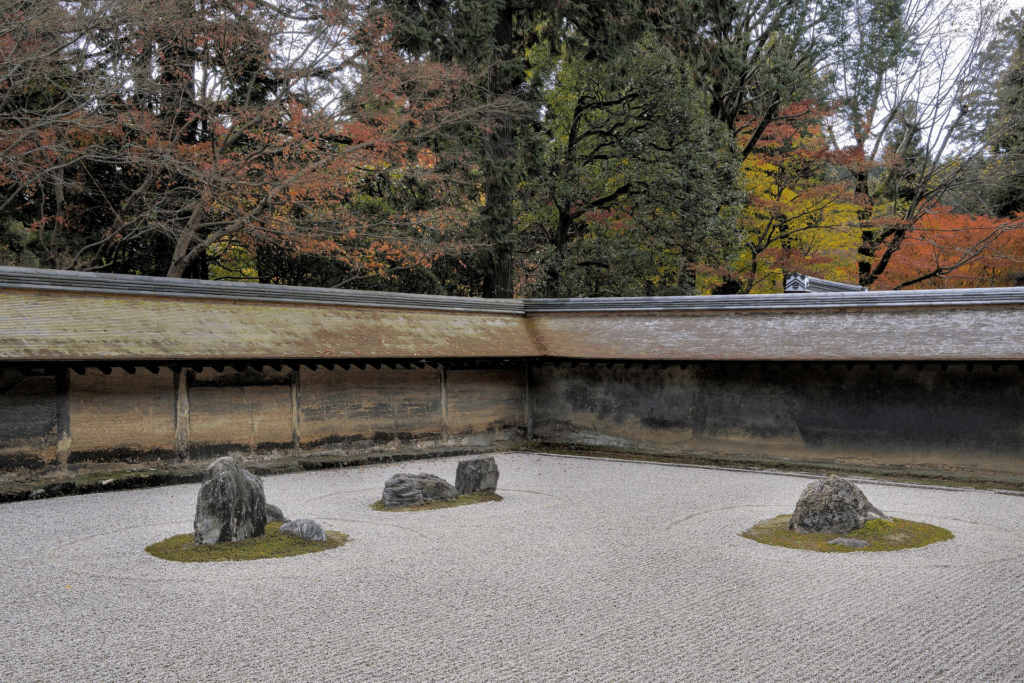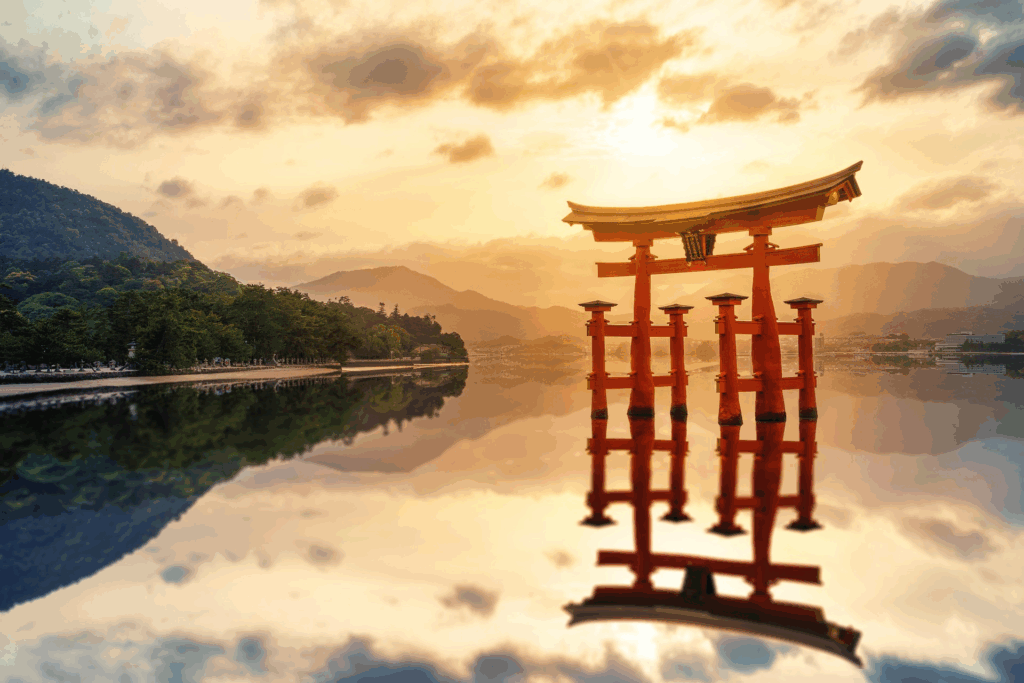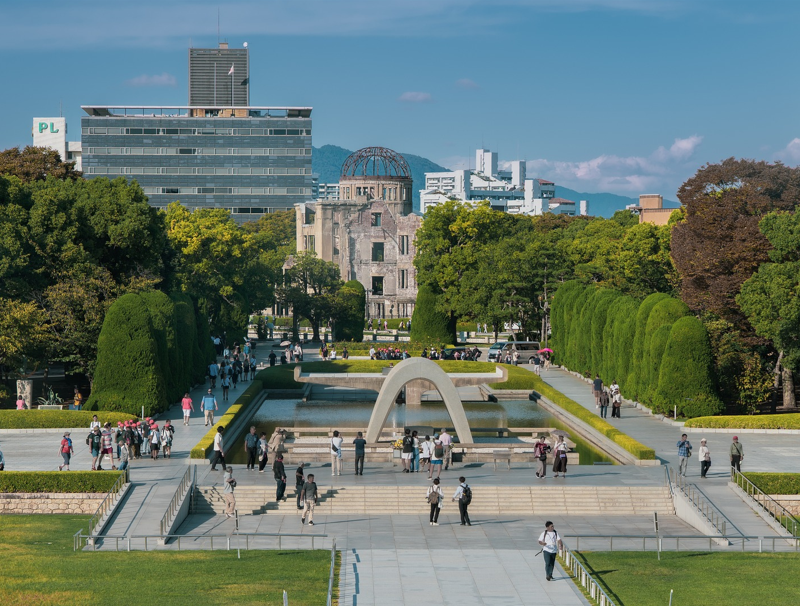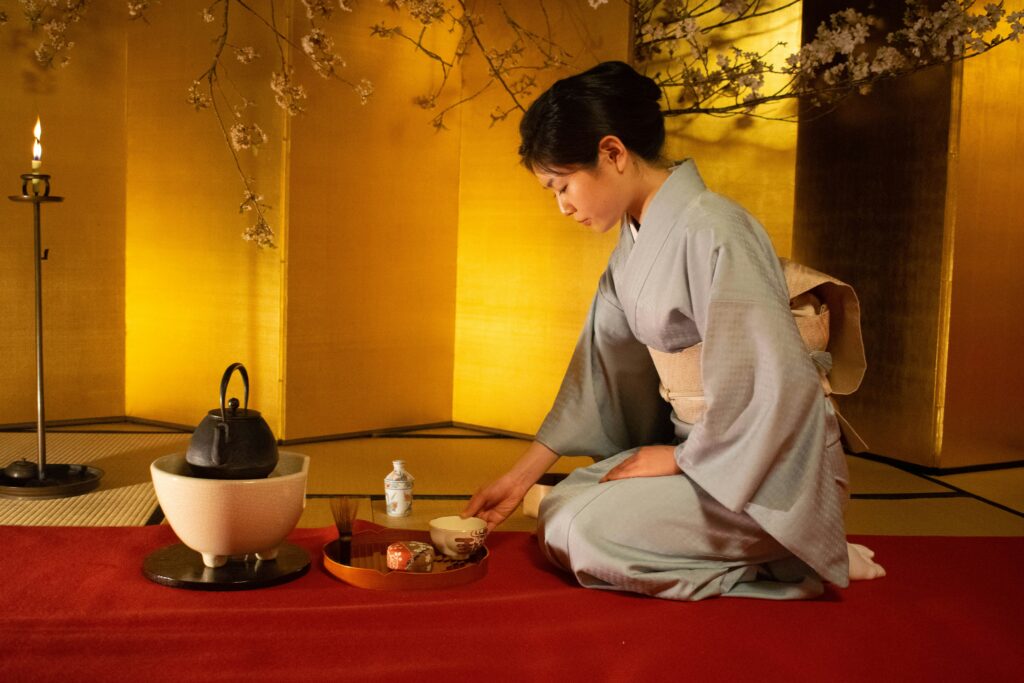
Exploring the Meaning of Ryōan-ji’s Zen Garden in Kyoto
Many visitors come to Japan looking for “Zen”—for silence, simplicity, and a moment outside the noise of everyday life.
But when you finally sit before a Zen garden, you notice something unexpected:
The quiet is not empty.
The stillness is not void.
Something invisible fills the space.
What is this presence that lives inside silence?
To approach that question, let us begin where many journeys into Zen begin—
in the dry garden of Ryōan-ji, on a quiet Kyoto morning.
Ⅰ. Standing in the Garden — An Encounter with Stillness
In the quiet of a Kyoto morning, at Ryōan-ji Temple, you settle on the wooden veranda of the abbot’s hall. Before you stretches the famous rock garden: a field of white gravel, where fifteen stones seem to float in deliberate rhythm.
No wind. No sound.
Only a single bird call rings out in the distance—so clear that it makes the silence feel even deeper.
Across the white gravel, silent waves appear to ripple.
The stones say nothing, yet within their silence something unmistakable resonates.
As you keep looking, time begins to blur.
Nothing is happening, and yet your heart begins to fill.
Why does a garden that seems empty feel so complete?
This silence is not hollow.
It is full—overflowing with presence.
And then a question rises:
What is “nothingness,” really?
Emptiness — A World Without Fixed Boundaries
In Buddhism, kū—often translated as “emptiness”—does not mean a void.
It is not the absence of things.
It means nothing exists on its own.
Everything arises through relationships.
Everything depends on something else to take shape.
Because of this, nothing has a permanent, separate identity.
A stone in the garden has meaning only because the white gravel embraces it.
The gravel expands because the stones give it contour.
Existence is always relational.
Seen this way, kū is not emptiness but interbeing:
a recognition that nothing stands isolated.
The Heart Sutra expresses this:
Form is emptiness, emptiness is form.
What has shape and what has none are not opposites—they are inseparable.
Kamō no Chōmei wrote the same truth in the opening of Hōjōki:
“The flow of the river is ceaseless, yet the water is never the same.”
We live only within change, and that is the essence of emptiness.
Emptiness is not lack, but awareness of connection—
the understanding that the world does not revolve around “me,”
and that “I” am simply one current within a larger flow.
This realization becomes the doorway to Zen.
The Garden — Speaking Through What Is Not There
Zen is not grasped by logic but through experience.
To enable that experience, the Zen garden was born—
a deliberate instrument of silence.
Karesansui, the dry landscape garden, represents flowing water without using water at all—
an art that reveals presence through absence.
The white gravel symbolizes the boundless expanse of kū.
The stones symbolize the tangible world.
They do not oppose each other.
Together, like inhale and exhale, they form a single world.
Emptiness gives life to the stones.
The stones deepen the sense of emptiness.
Everything exists only through relationship.
The garden speaks without speaking.
Its silence becomes a language of awareness.
Ryōan-ji — The View You Cannot Complete
There is another quiet mystery in this garden:
from any angle, one stone is always hidden.
You can never see all fifteen at once.
This is no accident.
It reflects the profound insight of its creators.
A complete perspective does not exist.
This is a truth of the world—and a core teaching of Zen.
What you can see, and what you cannot—
only together do they form reality.
Perhaps emptiness includes what lies beyond your sight.
In silence, this garden teaches us to embrace the world’s inherent incompleteness.
Stillness Is Not Empty — It Is Full
Standing before the garden, your breath naturally softens.
It is not that there is no sound—
it is that every sound has dissolved into a single, seamless quiet.
In that silence, your own heartbeat becomes part of the garden.
Stillness is not absence.
It is the moment when the world fills you completely.
“Nothingness” is not nothing.
It is all things, held in unity.
When you walk away, the garden remains within you.
Perhaps what you were seeing was not the garden,
but your own sense of kū reflected back.
And that quiet continues in your breathing—
a language beyond borders, alive in every culture and every era.
Stillness is a language the soul remembers.
This article may contain affiliate links. For details, please see our Affiliate Disclosure.


